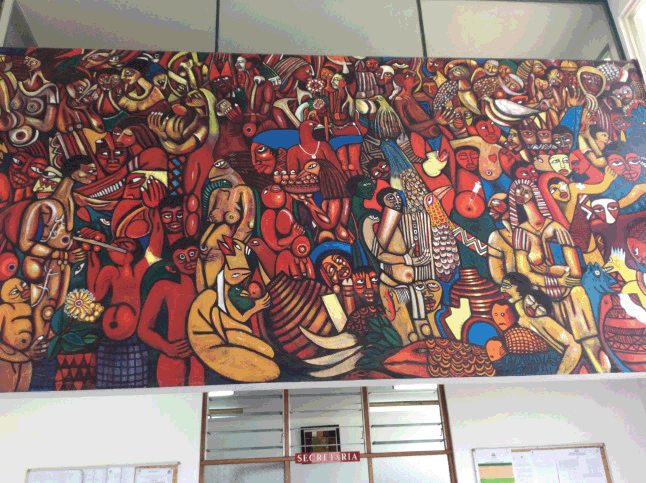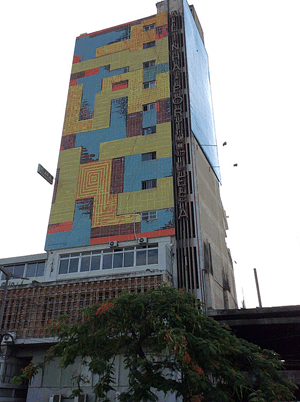By Laura Stovel
It is always risky to return to a much-loved place after a long absence. People change, favorite haunts disappear, and the qualities that drew you in the first place may no longer be present – or, on the contrary, they may have evolved into something wonderful.

Twenty-three years ago I travelled twice to Mozambique to visit an old friend who had just moved to Maputo, the Mozambican capital. Thirty years of civil war had just ended – a war of independence from Portugal followed almost immediately by a 16-year civil war. The latter war was notorious for the widespread use of landmines, terror tactics against civilians, including widespread mutilation and torture, and the abduction of children by rebel forces for use as combatants. That war was largely a proxy Cold War battle, sponsored by then-Rhodesia and South Africa who supported the rebel forces of Renamo against the Soviet Union-backed, Marxist Frelimo government.
On the last two trips, I greatly admired the courage and determination of the people I met to move forward and forge peace after so much cruelty and loss. This time I wanted to revisit my friend and a country I remembered so fondly.
As I wandered the now-traffic-congested streets of Maputo, I was delighted to see the old Continental Café where I used to sit for hours, hand-writing letters and sketching the world around me: the street children; the art deco Scala theatre across the street, and the ruins of the once-elegant Avenida (Prédio Pott) Building.
That grand old building, completed around 1905, was a department store until it burned down in 1990. Last time, I followed a child up a staircase to the second floor of the ruins and found several families, likely displaced by the war, living in the roofless rooms. This time I couldn’t resist climbing the stairs again and saw that one room was inhabited by a group of young men who were busy hanging laundry – squatting in a city where rents are extremely high.

The architecture of Maputo – a mix of Portuguese colonial, art deco and tropical modern – and abundant murals were just as I remembered them, providing surprises around every corner. People care about architecture and art in Mozambique; in bookstores, large sections are dedicated to architecture from around the world. Mozambique’s signature wood carvings, paintings and murals with intricate, intertwined figures are everywhere, from craft fairs and marketplaces to galleries and common spaces.

Once or twice a day I would pass someone, usually in their mid-20s or early 30s, missing an arm or leg – usually a leg. They would have been children at the end of the war, at a time when well over 100,000 landmines dotted the countryside. These landmines were used both offensively and for protection of vulnerable villages. In the village of Chicuque in 1992, villagers told me they distributed mines around the village in the evening and gathered them in the morning to ward off rebel attacks and abductions.

With the adoption of the Anti-Personnel Mine Ban Convention in 1997, now ratified by 162 states (excluding the US, Russia, China and India, among others), landmines are a much smaller threat than they used to be in – and after – war. The Canadian government, especially then-Minister of Foreign Affairs Lloyd Axworthy, was active in the fight to ban anti-personnel landmines and Ottawa hosted the talks that led to the Convention, which is also known as the Ottawa Treaty.

The danger of landmines meant that, even after the war ended, agricultural land in many regions could only be used at great peril – a devastating setback to a developing country trying to rebuild. Over the years, organizations like the British charity HALO trust, took on the systematic and dangerous work of clearing the mines – interestingly, using rats on leashes to smell them out (see this video report). In September 2015, almost exactly 23 years after the peace accord was signed, the government declared Mozambique to be landmine free.
But just as the last landmine was cleared, the rumbles of war started again – and some of the same old actors are in the forefront of the violence. Why would this be? The Mozambique peace process was celebrated as a success. After the final peace accord was signed in October 1992, the rebel group, Renamo, was converted into a political party and instead of facing charges for crimes committed under his leadership during the war, Alfonso Dhlakama, the Renamo leader, became leader of the political opposition.
Twenty-three years of peace has brought some prosperity, especially to the south of the country. The tourist industry flourished, with the beautiful Mozambican beaches attracting many South African visitors. The investment climate improved, especially drawing South African money and excellent roads were built in the southern part of the country.
This development, however, seemed to stop in the central and northern parts of the country – the former Renamo stronghold. The discovery in 2010 of large amounts of off-shore natural gas and large coal reserves in the north, makes control over that region much more valuable.
I also heard many stories of corruption by officials in the governing Frelimo party – especially land grabs – and some accusations that the 2014 general elections were not transparent and fair.
Dhlakama claims that he won the 2014 elections in six central and northern provinces and this gives Renamo has the right to govern them. He asserts that Renamo will take control of those provinces this month.
While some observers are using the word “war” to describe the situation, the phrase “low-level armed conflict” is more persuasive. War or not, the violence seems to be escalating. Since the beginning of February Renamo has raided villages, burned houses, abducted and shot traditional leaders and attacked vehicles on the main road north.
Government soldiers have also been accused of attacking villages viewed as being sympathetic to Renamo, and shooting, beating and detaining villagers. Since mid-February the number of Mozambican refugees in the Kapise camp in neighbouring Malawi rose from 4,000 to more than 10,000. Attacks by Mozambican military forces against villagers seen as being sympathetic to Renamo seem to be the main reason for their flight. A recent Human Rights Watch report listed allegations of summary executions, sexual assaults, abductions and burning of property by government soldiers.
It’s sad to see a country with so much going for it – a wealth of natural resources, natural beauty, rich, artistic cultures, and people who are generous, lively and open to diversity – pulled down by corruption, violence, regional politics and the naked ambition of certain leaders. Mozambique was considered a post-war “success story” but an overly generous ‘forgive and forget’ approach meant that there was no accountability for war crimes and no attempt to look at, and address, the root causes of grievances.
For me, Mozambique continues to be a source of inspiration and wonder. With so much to offer and so much to lose, I hope that this crisis provides a wake-up call on all sides and that on my visit I will see people enjoying the fruits of peace that they deserve.



